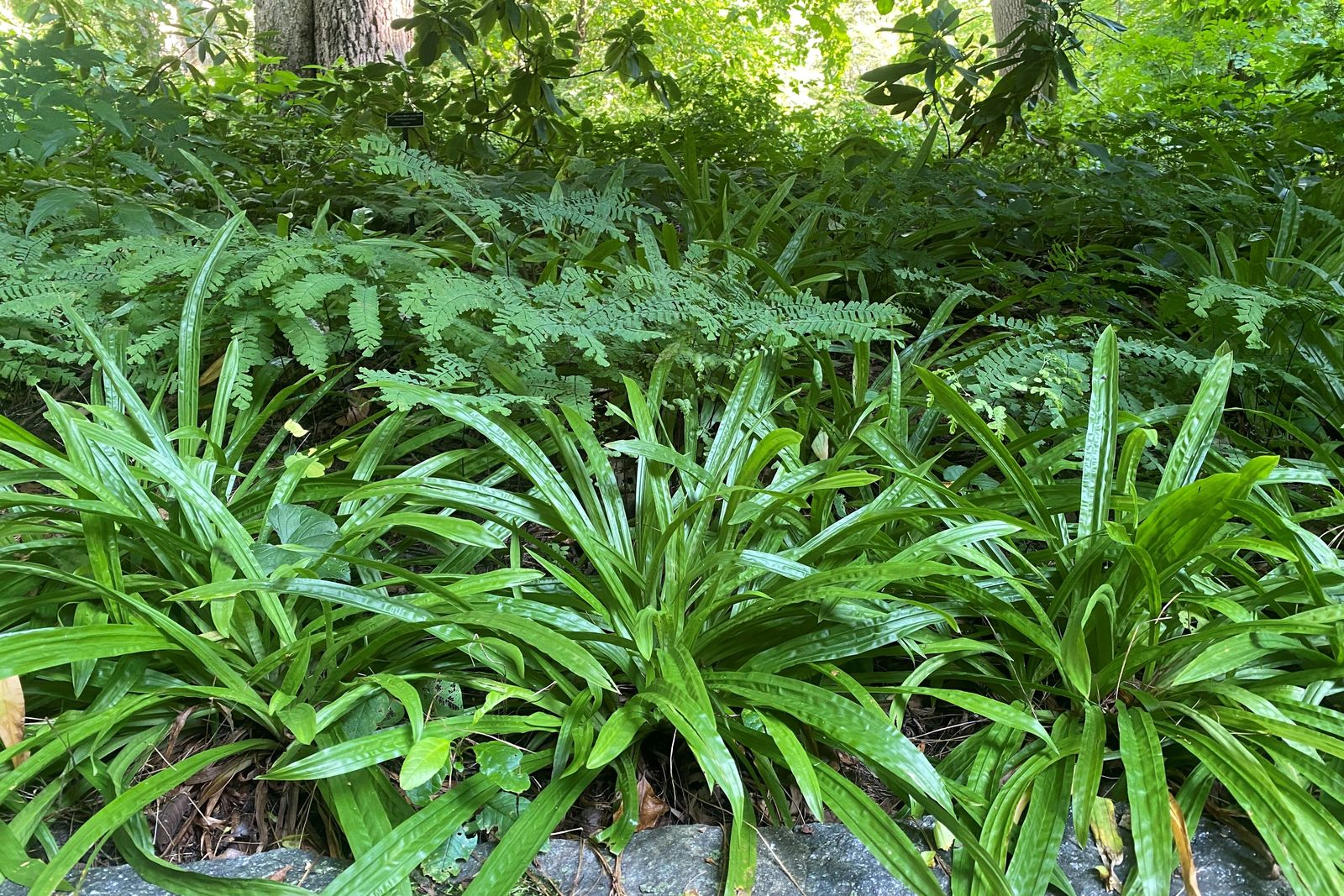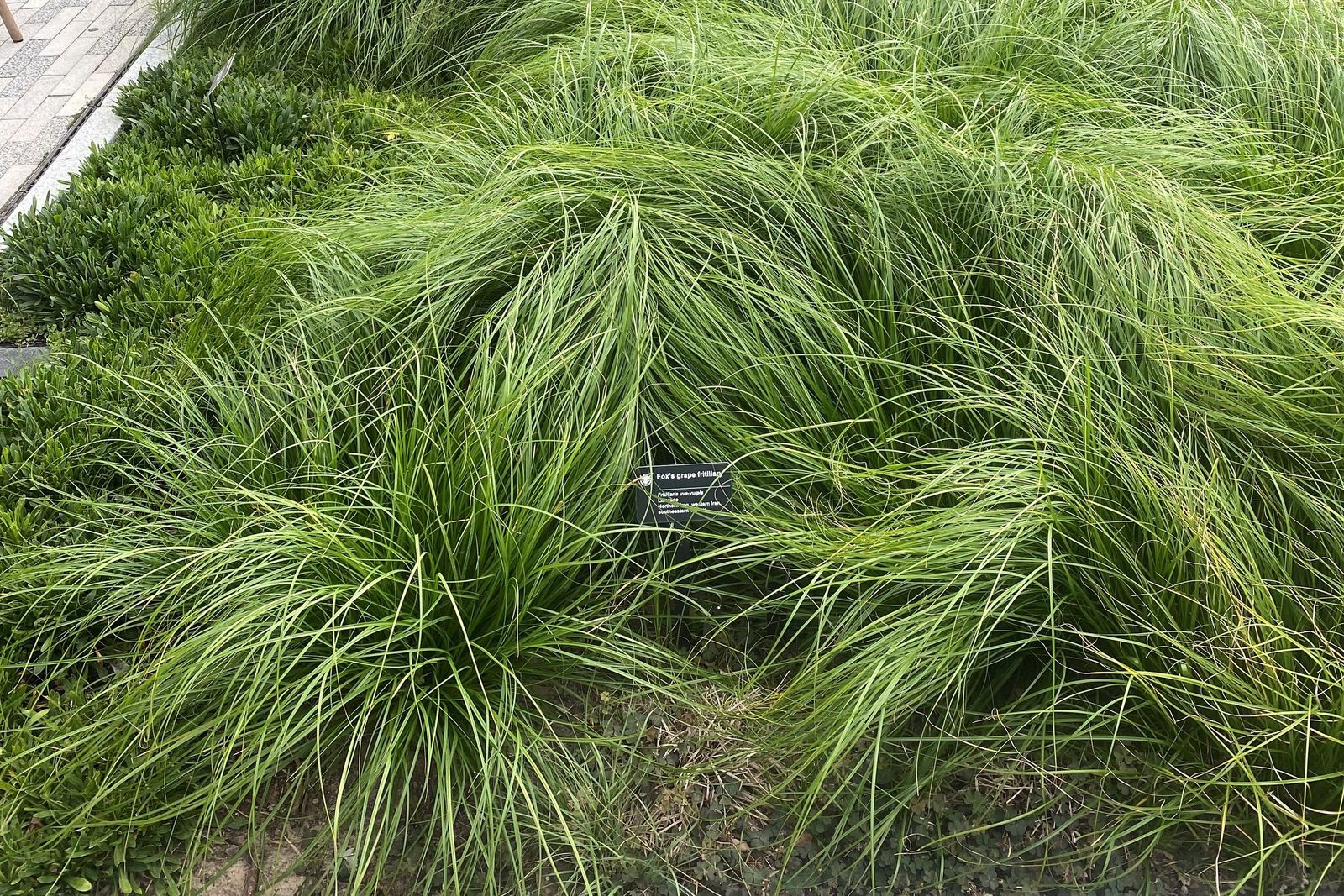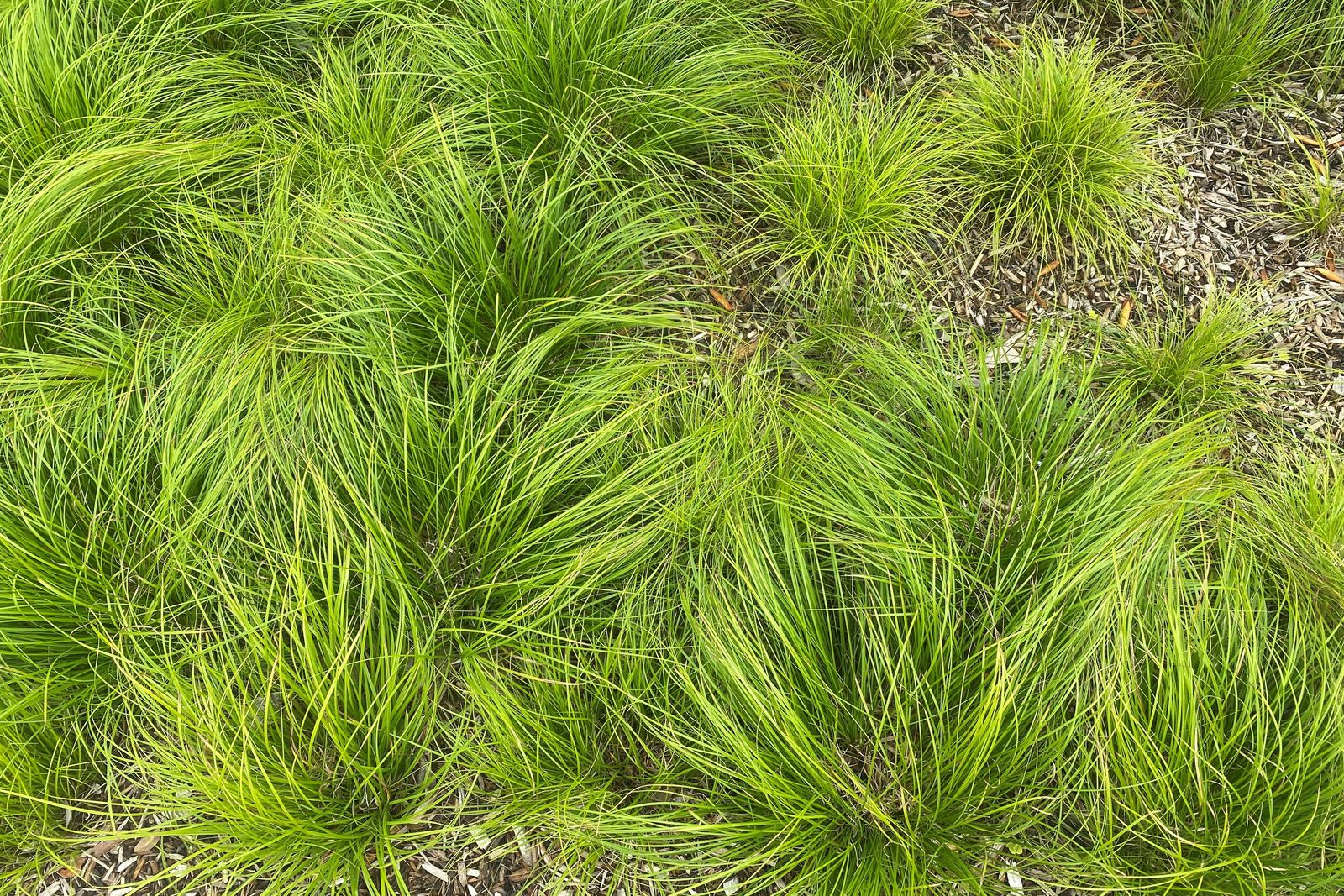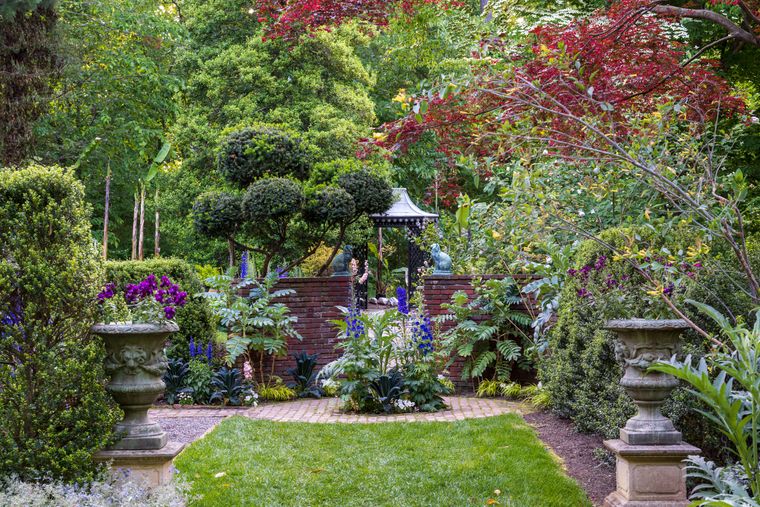
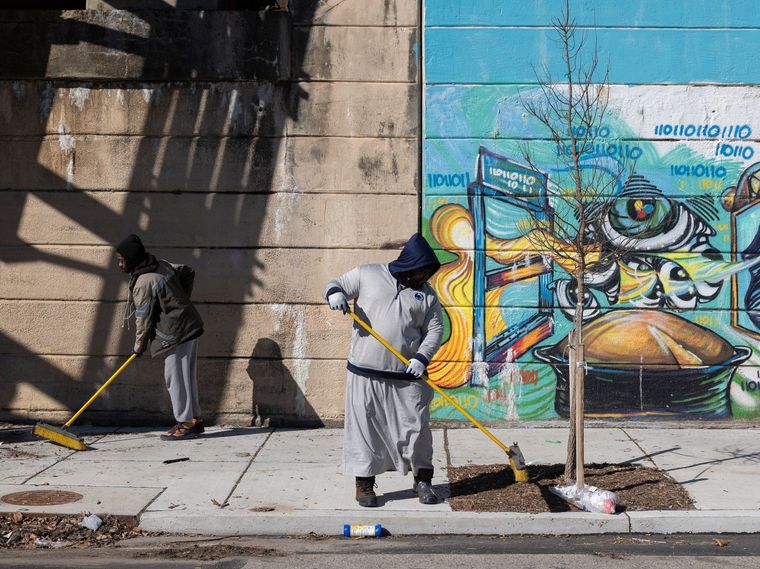
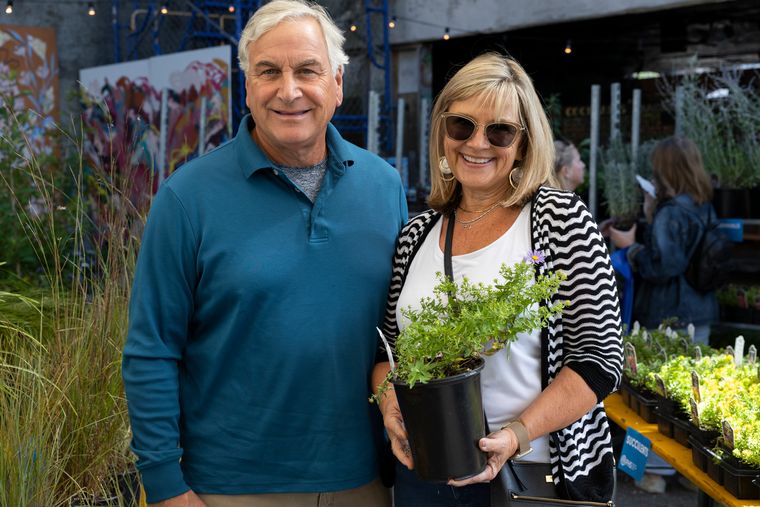
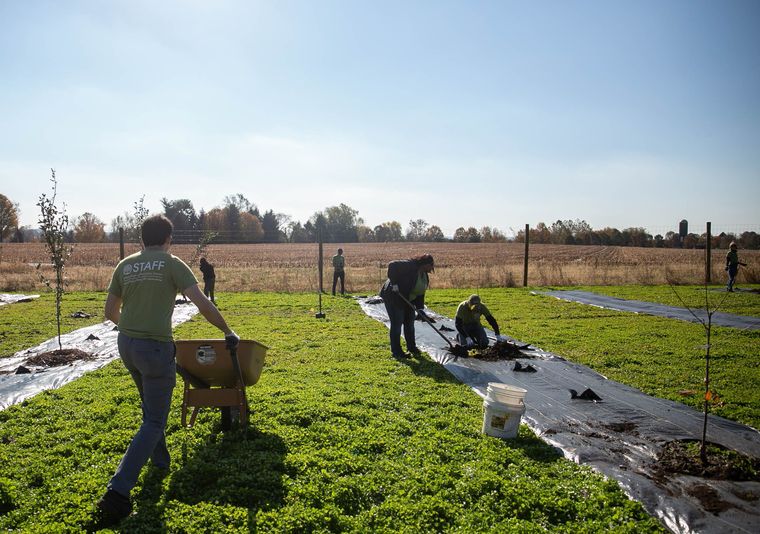
Gardening with Sedges
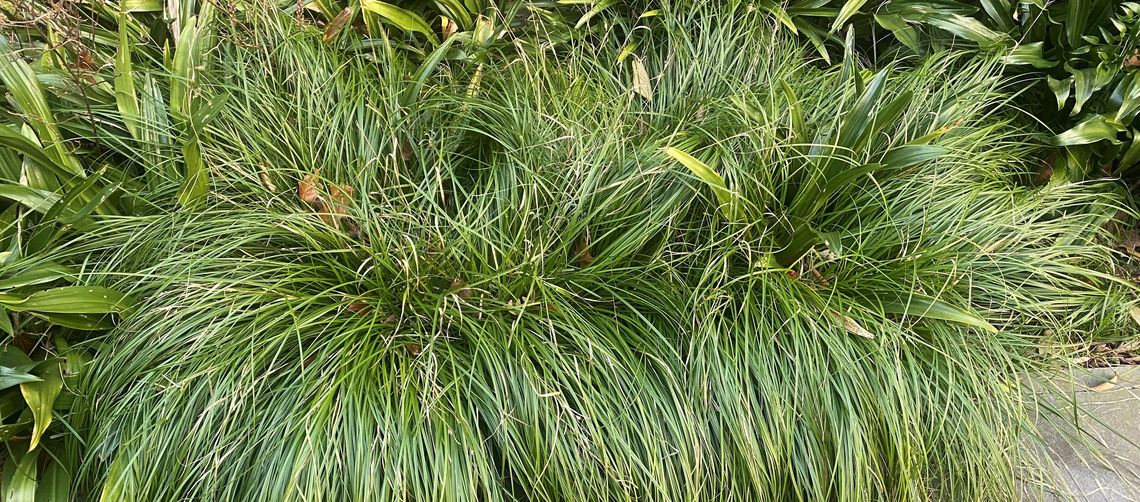
By Andrew Bunting, PHS Vice President of Horticulture
It is only in the last 10-15 years that native sedges have been considered for including in the garden. These grass-like plants were considered to be weedy and to have little function and ornament in the garden. Today, sedges are regarded as being critically important to supporting many ecosystems, biodiversity, and supporting numerous ecological functions. In both natural areas and the garden alike sedges play an important role in soil stabilization. Additionally, the roots system play a key role in filtering pollutants and excess nutrients from water as it passes through the soil. Carex seeds are an important food source for native bees and mammals. Sedges are also a host plant for caterpillars of native moths and butterflies.
There are many native sedges that also have an ornamental impact in the garden. In 2025, the Cherokee sedge, Carex cherokeensis received the PHS Gold Medal Award distinction. Criteria for this award includes ornamental attributes; ease of cultivation and supporting ecological functions. This sedge produces clumps up to 18 inches tall with fine foliage. This sedge is great for massing and makes a nice contrast with more bold foliaged plants like the native alumroot, Heuchera villosa. While many sedges thrive in deep shade, Carex cherokeensis can tolerate a reasonable amount of sun.
In Chester County, North Creek Nurseries which is a nationally recognized wholesale company that produces trays of plugs of hundreds of different plants. Their number one selling plant is the Pennsylvania sedge, Carex pennsylvanica. This sedge produces tight clumps with very fine foliage. This shade loving sedge will thrive in deep shade including dry shade.
The searsucker sedge, Carex plantaginea is aptly names for its searsucker-like texture on the broad shiny leaves. This native sedge will thrive in moist shaded areas in the garden. Over time this clumping form will spread into large masses. It combines nicely with other woodland plants like the Christmas fern, Polystichum acrostichoides and the Solomon’s seal, Polygonatum biflorum.
There are two sedges that are excellent for their steely-blue foliage. Carex laxiculmis Bunny Blue® has relatively broad leaves and is a spreading sedge. The leaves are a distinct glaucous blue. It grows best in partial shade. Carex flacca, the blue sedge is non-native, but has a similar leaf coloration to Bunny Blue®. The leaves are narrow which gives it a finer texture. ‘Blue Zinger’ is a selection noted also for its striking blue foliage.
There are dozens of sedges now available in garden centers. Many of them are native to North America where there are estimated to be between 500-650 species. Sedges in general are excellent for growing in masses and can be used to fill voids and gaps in the garden and essentially “knit” the garden together.
